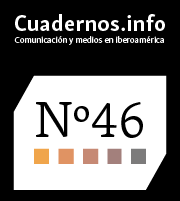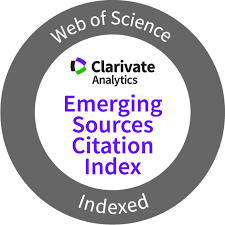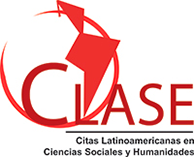Jornalismo construtivo: uma resposta às razões dos usuários para evitar as notícias
DOI:
https://doi.org/10.7764/cdi.46.1714Palavras-chave:
jornalismo construtivo, consumo de notícias, evasão de notícias, emoções, confiança nas notíciasResumo
Apesar de que o panorama midiático atual permite escolher entre diversas plataformas, fontes e meios para se informar, há usuários que decidem evitar as notícias. Esse artigo analisa as razões que motivam esta evasão de informação, colocando-as em diálogo com as propostas do jornalismo construtivo. Tomando a Espanha como um estudo de caso e através de uma análise qualitativa e quantitativa do Digital News Report – com base num estudo-piloto e num inquérito a 2006 usuários digitais –, os resultados mostram que 50% dos internautas espanhóis da Internet evitam ativamente notícias, uma prática mais comum entre as mulheres, os jovens e as pessoas com baixa renda. As razões apresentadas pelos usuários para não consultarem as notícias referem-se a dois fatores principais. Por um lado, à situação do usuário, seja pela falta de interesse na atualidade seja pela percepção de que a exposição ao fluxo de notícias tem efeitos negativos na pessoa (sendo a principal razão para evitá-las, no 73% dos casos). Por outro lado, também se denunciam aos meios de comunicação – tanto a nível corporativo quanto aos jornalistas que produzem a informação – de não respeitarem alguns princípios básicos da profissão. Especificamente, 29% dos usuários não consultam as notícias porque desconfia da sua veracidade. Os meios poderiam combater essas motivações optando por uma abordagem mais construtiva do jornalismo, baseado em uma cobertura que visa gerar um impacto social positivo.
Downloads
Não há dados estatísticos.
Referências
Adoni, H., Peruško, Z., Nossek, H., & Schrøder, K.C. (2017). Introduction: News consumption as a democratic resource – News media repertoires across Europe. Participations, 14(2), 226-252. Retrieved from http://www.participations.org/Volume%2014/Issue%202/11.pdf
Ahva, L. & Hautakangas, M. (2018). Why Do We Suddenly Talk So Much About Constructiveness?
Journalism Practice, 12(6), 657-661. https://doi.org/10.1080/17512786.2018.1470474
Beckett, C. & Deuze, M. (2016). On the role of emotion in the future of journalism. Social Media + Society, 2(3), 1-6. https://doi.org/10.1177/2056305116662395
Bjur, J., Schrøder, K.C., Hasebrink, U., Courtois, C., Adoni, A., & Nossek, H. (2013). Cross-media Use. Unfolding Complexities in Contemporary Audiencehood. In N. Carpentier, K. C. Schrøder & L. Hallett (Eds.), Transformations: Shifting Audience Positions in Late Modernity (pp. 15–29). New York, NY: Routledge.
Boczkowski, P., Mitchelstein, E., & Matassi, M. (2018). ‘News comes across when I’m in a moment of leisure’: Understanding the practices of incidental news consumption on social media. New Media & Society, 20(10), 3523-3539. https://doi.org/10.1177/1461444817750396
Bødker, H. (2019). Cafébabel and ‘Génération Bataclan’: Cosmopolitan identities and/as constructive European news. Journalism. 20(4), 520–534. https://doi.org/10.1177/1464884918770524
Braun, V. & Clarke, V. (2006). Using thematic analysis in psychology. Qualitative Research in Psychology, 3(2), 77–101. https://doi.org/10.1191/1478088706qp063oa
Bro, P. (2019). Constructive journalism: Proponents, precedents, and principles. Journalism. 20(4), 504–519. https://doi.org/10.1177/1464884918770523
Costera Meijer, I. (2013). Valuable Journalism: A Search for Quality from the Vantage Point of the User. Journalism 14(6), 754-770. https://doi.org/10.1177/1464884912455899
Couldry, N. & Hepp, A. (2017). The Mediated Construction of Reality. Cambridge, UK: Polity.
Deuze, M. (2005). What is journalism? Professional identity and ideology of journalists reconsidered. Journalism 6(4), 442–464. https://doi.org/10.1177/1464884905056815
Edgerly, S. (2015). Red media, blue media, and purple media: News repertoires in the colorful media landscape. Journal of Broadcasting & Electronic Media, 59(1), 1-21. https://doi.org/10.1080/08838151.2014.998220
Edgerly, S. (2018, May). News is Not Made for Someone Like Me: Young Adults and the Attitudes that Resulted in News Avoidance During the 2016 Election. Lecture presented at the 68th Annual ICA Conference, Prague, Czech Republic.
Edgerly, S., Vraga, E. K., Bode, L., Thorson, K., & Thorson, E. (2018). New media, new relationship to participation? A closer look at youth news repertories and political participation. Journalism & Mass Communication Quarterly, 95(1) 192–212. https://doi.org/10.1177/1077699017706928
Fletcher, R. & Nielsen, R.K. (2017). Are People Incidentally Exposed to News on Social Media? A Comparative Analysis. New Media and Society, 20(7), 2450-2468.
https://doi.org/10.1177/1461444817724170
Fredrickson, B. L. (2001). The role of positive emotions in positive psychology: The broaden-and-build theory of positive emotions. American Psychologist, 56(3), 218–226. https://doi.org/10.1037/0003-066X.56.3.218
Gaziano, C. & McGrath, K. (1986). Measuring the concept of credibility. Journalism Quarterly, 63(3), 451–462. https://doi.org/10.1177/107769908606300301
Gil de Zúñiga, H., Weeks, B., & Ardevol-Abreu, A., (2017). Effects of the news-finds-me perception in communication: Social media use implications for news seeking and learning about politics. Journal of Computer-Mediated Communication, 22(3), 105-123. https://doi.org/10.1111/jcc4.12185
Gyldensted, C. (2015). From Mirrors to Movers: Five Elements of Positive Psychology in Constructive Journalism. Charleston, SC: Group Publishing.
Gottfried, J. (2020, February 26). Americans’ news fatigue isn’t going away – about two-thirds still feel worn out. Pew Research Center. Retrieved from https://www.pewresearch.org
Haagerup, U. (2014). Constructive News: How to Save the Media and Democracy with Journalism of Tomorrow. New York, NY: InnoVatio Publishing.
Harcup, T. & O’Neill, D. (2001). What is news? Galtung and Ruge revisited. Journalism Studies, 2(2), 261–280. https://doi.org/10.1080/14616700118449
Hasebrink, U. & Hepp, A. (2017). How to research cross-media practices? Investigating media repertoires and media ensembles. Convergence, 23(4), 362–377. https://doi.org/10.1177/1354856517700384
Helgerud, A. (2015). Lidelse, frakobling og strategisk unngåelse (Suffering, disconnection and strategic avoidance) (Master’s thesis). Retrieved from http://bora.uib.no/handle/1956/10893
Hermans, L. & Gydensted, C. (2019). Elements of constructive journalism: Characteristics, practical application and audience valuation. Journalism, 20(4), 535–551. https://doi.org/10.1177/1464884918770537
Hermans, L. & Drok, N. (2018). Placing Constructive Journalism in Context. Journalism Practice, 12(6), 679-694. https://doi.org/10.1080/17512786.2018.1470900
Instituto Nacional de Estadística (INE). (2017a). Población residente en España (Resident population in Spain) (data set). Retrieved from https://www.ine.es/dyngs/INEbase/es/operacion.htm?c=Estadistica_C&cid=1254736176951&menu=ultiDatos&idp=1254735572981
Instituto Nacional de Estadística (INE). (2017b). Equipamiento y uso de TIC en los hogares- Año 2017 (Equipment and use of ICTs in homes, 2017) (data set). Retrieved from
https://www.ine.es/dyngs/INEbase/es/operacion.htm?c=Estadistica_C&cid=
&menu=ultiDatos&idp=1254735576692
Jackson, J. (2016). Publishing the Positive Exploring the motivations for and the consequences of reading solutions-focused journalism (Independent research conducted as part of Master’s Degree in Positive Psychology at the University of East London, United Kingdom). Retrieved from https://www.constructivejournalism.org/wp-content/uploads/2016/11/Publishing-the-Positive_MA-thesis-research-2016_Jodie-Jackson.pdf
Jenkins, H. (2006). Convergence Culture: Where Old and New Media Collide. New York, NY: New York University Press.
Kantar Media. (2016). Brand and trust in a fragmented news environment. Retrieved from https://reutersinstitute.politics.ox.ac.uk/our-research/brand-and-trust-fragmented-news-environment
Kleemans, M., Dohmen, R., Schlindwein, L. F., Tamboer, S. L., de Leeuw, R. N., & Buijzen, M. (2019). Children’s cognitive responses to constructive television news. Journalism, 20(4), 568–582. https://doi.org/10.1177/1464884918770540
Ksiazek, T. B., Malthouse, E. C., & Webster, J. G. (2010). News-seekers and Avoiders: Exploring Patterns of Total News Consumption Across Media and the Relationship to Civic Participation. Journal of Broadcasting & Electronic Media, 54(4), 551–568. https://doi.org/10.1080/08838151.2010.519808
Kovach, B. & Rosenstiel, T. (2003). Los elementos del periodismo (The elements of journalism). Madrid, Spain: Santillana.
Le Masurier, M. (2015). What is slow journalism? Journalism Practice, 9(2), 138–152. https://doi.org/10.1080/17512786.2014.916471
Lindell, J. & Sartoretto, P. (2018). Young People, Class and the News. Distinction, socialization and moral sentiments. Journalism Studies, 19(14), 2042-2061. https://doi.org/10.1080/1461670X.2017.1310628
Lynch, J. & McGoldrick, A. (2005). Peace Journalism. Gloucestershire, UK: Hawthorn Press.
Lough, K. & McIntyre, K. (2019). Visualizing the Solution: An analysis of the images that accompany solutions-oriented news stories. Journalism, 20(4), 583–599. https://doi.org/10.1177/1464884918770553
Martínez-Costa, M. P., Sánchez-Blanco, C., & Serrano-Puche, J. (2018). El consumo de noticias online en España: temáticas, formatos e itinerarios de acceso (Online News Consumption in Spain: topics, formats and access routes). In J. L. González-Esteban & J. A. García-Avilés (Eds.),
Mediamorfosis. Radiografía de la innovación en el periodismo (Mediamorphosis. Radiography of Innovation in Journalism) (pp. 35-59). Madrid, Spain: Sociedad Española de Periodística.
Mast, J., Coesemans, R., & Temmerman, M. (2019). Constructive journalism: Concepts, practices, and discourses. Journalism, 20(4), 492–503. https://doi.org/10.1177/1464884918770885
McIntyre, K. (2019). Solutions Journalism. Journalism Practice, 13(1), 16-34. https://doi.org/10.1080/17512786.2017.1409647
McIntyre, K. & Gyldensted, C. (2018). Constructive Journalism: An Introduction and Practical Guide for Applying Positive Psychology Techniques to News Production. The Journal of Media Innovations, 4(2), 20–34. https://doi.org/10.5617/jomi.v4i2.2403
McIntyre, K., Lough, K., & Manzanares, K. (2018). Solutions in the shadows: The effects of incongruent visual messaging in solutions journalism news stories. Journalism and Mass Communication Quarterly, 95(4), 971–989. https://doi.org/10.1177/1077699018767643
McIntyre, K. & Sobel, M. (2017). Motivating news audiences: Shock them or provide them with solutions? Communication & Society, 30(1), 39–56. https://doi.org/10.15581/003.30.1.39-56
McIntyre, K. & Sobel, M. (2018). Reconstructing Rwanda: How Rwandan reporters use constructive journalism to promote peace. Journalism Studies, 19(14), 2126-2147. https://doi.org/10.1080/1461670X.2017.1326834
Meier, K. (2018). How Does the Audience Respond to Constructive Journalism? Journalism Practice, 12(6), 764-780. https://doi.org/10.1080/17512786.2018.1470472
Mellado, C., Hellmueller, L., & Donsbach, W. (2017). Journalistic Role Performance: Concepts, Contexts, and Methods. London, UK: Routledge.
Mieles Barrera, M. D., Tonon, G., & Alvarado Salgado, S. V. (2012). Investigación cualitativa: el análisis temático para el tratamiento de la información desde el enfoque de la fenomenología social (Qualitative research: the thematic analysis for the treatment of information from the approach of social phenomenology). Universitas Humanística, 74(74), 195–225. Retrieved from https://revistas.javeriana.edu.co/index.php/univhumanistica/article/view/3648
Palmer, R. & Toff, B. (2020). What Does it Take to Sustain a News Habit? The Role of Civic Duty Norms and a Connection to a "News Community" Among News Avoiders in the UK and Spain. International Journal of Communication, 14, 1634-1653. Retrieved from https://ijoc.org/index.php/ijoc/article/view/12252
Peters, C., & Broersma, M. (eds.) (2012). Rethinking Journalism: Trust and participation in a transformed news landscape. London: Routledge.
Peters, C, & Broersma, M. (eds.) (2016). Rethinking Journalism Again: Societal Role and Public Relevance in a Digital Age. London: Routledge.
Peters, C. & Schrøder, K. C. (2018). Beyond the Here and Now of News Audiences: A Process-Based Framework for Investigating News Repertoires. Journal of Communication, 68(6), 1079-1103. https://doi.org/10.1093/joc/jqy060
Poindexter, P. (2008). When Women Ignore the News. In P. Poindexter, S. Meraz, & A. Schmitz (Eds.), Women, Men, and News. Divided and Disconnected in the News Media Landscape (pp. 35–47). New York, NY: Routledge.
Price, V. & Zaller, J. (1993). Who gets the news? Alternative measures of news reception and their implications for research. Public Opinion Quarterly, 57(2), 133-164. https://doi.org/10.1086/269363
Prior, M. (2007). Post-broadcast democracy: How media choice increases inequality in political involvement and polarizes elections. New York, NY: Cambridge University Press.
Purcell, K., Rainie, L., Mitchell, A., Rosenstiel, T., & Olmstead, K. (2010, March 1). Understanding the participatory news consumer. Retrieved from http://assets.pewresearch.org/wp-content/uploads/sites/13/legacy/Participatory_News_Consumer.pdf
Rosas, O. (2018). Strategic Avoidance and Strategic Use: A Look into Spanish Online Journalists’ Attitudes Toward Emotions in Reporting. International Journal of Communication, 12, 2114-2132. Retrieved from https://ijoc.org/index.php/ijoc/article/view/6789
Rosen, J. (1999). What Are Journalists for? New Haven, CN: Yale University Press.
Rotmeijer, S. (2018). ‘Words that work?’ Practices of constructive journalism in a local Caribbean context. Journalism, 20(4), 600-616. https://doi.org/10.1177/1464884918770555
Schrøder, K. C. (2015). News media old and new. Fluctuating audiences, news repertoires and locations of consumption. Journalism Studies, 16(1), 60-78. https://doi.org/10.1080/1461670X.2014.890332
Schrøder, K. C. & Ørsten, M. (2016). The Nature of News Avoidance in a Digital World. In N. Newman, R. Fletcher, D. Levy, & R. Kleis Nielsen (Eds.), Reuters Digital News Report 2016. Oxford, UK: Reuters Institute for the Study of Journalism. Retrieved from http://www.digitalnewsreport.org/essays/2016/nature-news-avoidance-digital-world/
Serrano-Puche, J. (2017). Meta-analysis of Digital Consumption in the Contemporary Media Ecosystem: Key Factors and Emotional Implications. Mediterranean Journal of Communication, 8(1), 75–85. https://doi.org/10.14198/MEDCOM2017.8.1.6.
Serrano-Puche, J. (2018). Credibilidad y confianza en los medios de comunicación: un panorama de la situación en España (Credibility and Trust in the Media: an overview of the Spanish case). In M. González & M. Valderrama (Coords.), Discursos comunicativos persuasivos hoy (Contemporary Persuasive Communicative Discourses) (pp. 429–440). Madrid, Spain: Tecnos.
Shehata, A., Wadbring, I., & Nicolas Hopmann, D. N. (2015, May). A longitudinal analysis of news-avoidance over three decades: From public service monopoly to smartphones. Lecture presented at the 65th Annual ICA Conference, San Juan, Puerto Rico.
Skovsgaard, M. & Andersen, K. (2020). Conceptualizing news avoidance: Towards a shared understanding of different causes and potential solutions. Journalism Studies, 21(4), 459-476. https://doi.org/10.1080/1461670X.2019.1686410
Strömbäck, J. (2017). News seekers, news avoiders, and the mobilizing effects of election campaigns: Comparing election campaigns for the national and European parliaments. International Journal of Communication, 11, 237-258. Retrieved from https://ijoc.org/index.php/ijoc/article/view/5919
Swart, J., Peters, C., & Broersma, M. (2017). Navigating Cross-Media News Use. Media repertoires and the value of news in everyday life. Journalism Studies, 18(11), 1343-1362. https://doi.org/10.1080/1461670X.2015.1129285
Taneja, H., Webster, J.G., Malthouse, E.C., & Ksiazek, T. B. (2012). Media consumption across platforms: identifying user-defined repertoires. New Media & Society, 14(6), 951–968. https://doi.org/10.1177/1461444811436146
Toff, B. & Nielsen, R. K. (2018). ‘I Just Google It’: Folk Theories of Distributed Discovery. Journal of Communication, 68(3), 636–657. https://doi.org/10.1093/joc/jqy009
Toff, B. & Palmer, R. (2018). Explaining the Gender Gap in News Avoidance: “News-Is-for-Men” Perceptions and the Burdens of Caretaking. Journalism Studies, 20(11), 1563-1579. https://doi.org/10.1080/1461670X.2018.1528882
Van den Bulck, J. (2006). Television News Avoidance: Exploratory Results From a One-Year Follow-Up Study. Journal of Broadcasting & Electronic Media, 50(2), 231-252. https://doi.org/10.1207/s15506878jobem5002_4
van der Meer, T., Kroon, A. C., Verhoeven, P., & Jonkman, J. (2019). Mediatization and the Disproportionate Attention to Negative News. Journalism Studies 20(6), 783-803. https://doi.org/10.1080/1461670X.2018.1423632
Vara-Miguel, A. (2017). El 10% de los usuarios españoles evita habitualmente las noticias (10% of Spanish users usually avoid news). Digital News Report 2017: España (Digital News Report: Spain). Navarra, Spain: Universidad de Navarra.
Wiard, V. & Simonson, M. (2019). “The city is ours, so let’s talk about it”: Constructing a citizen media initiative in Brussels. Journalism 20(4), 617–631. https://doi.org/10.1177/1464884918770556
Woodstock, L. (2014). The news-democracy narrative and the unexpected benefits of limited news consumption: The case of news resisters. Journalism 15(7), 834–849. https://doi.org/10.1177/1464884913504260
Woodstock, L. (2016). “It’s kind of like an assault, you know”: media resisters’ meta-decoding practices of media culture. Critical Studies in Media Communication, 33(5), 399–408. https://doi.org/10.1080/15295036.2016.1222076
Ahva, L. & Hautakangas, M. (2018). Why Do We Suddenly Talk So Much About Constructiveness?
Journalism Practice, 12(6), 657-661. https://doi.org/10.1080/17512786.2018.1470474
Beckett, C. & Deuze, M. (2016). On the role of emotion in the future of journalism. Social Media + Society, 2(3), 1-6. https://doi.org/10.1177/2056305116662395
Bjur, J., Schrøder, K.C., Hasebrink, U., Courtois, C., Adoni, A., & Nossek, H. (2013). Cross-media Use. Unfolding Complexities in Contemporary Audiencehood. In N. Carpentier, K. C. Schrøder & L. Hallett (Eds.), Transformations: Shifting Audience Positions in Late Modernity (pp. 15–29). New York, NY: Routledge.
Boczkowski, P., Mitchelstein, E., & Matassi, M. (2018). ‘News comes across when I’m in a moment of leisure’: Understanding the practices of incidental news consumption on social media. New Media & Society, 20(10), 3523-3539. https://doi.org/10.1177/1461444817750396
Bødker, H. (2019). Cafébabel and ‘Génération Bataclan’: Cosmopolitan identities and/as constructive European news. Journalism. 20(4), 520–534. https://doi.org/10.1177/1464884918770524
Braun, V. & Clarke, V. (2006). Using thematic analysis in psychology. Qualitative Research in Psychology, 3(2), 77–101. https://doi.org/10.1191/1478088706qp063oa
Bro, P. (2019). Constructive journalism: Proponents, precedents, and principles. Journalism. 20(4), 504–519. https://doi.org/10.1177/1464884918770523
Costera Meijer, I. (2013). Valuable Journalism: A Search for Quality from the Vantage Point of the User. Journalism 14(6), 754-770. https://doi.org/10.1177/1464884912455899
Couldry, N. & Hepp, A. (2017). The Mediated Construction of Reality. Cambridge, UK: Polity.
Deuze, M. (2005). What is journalism? Professional identity and ideology of journalists reconsidered. Journalism 6(4), 442–464. https://doi.org/10.1177/1464884905056815
Edgerly, S. (2015). Red media, blue media, and purple media: News repertoires in the colorful media landscape. Journal of Broadcasting & Electronic Media, 59(1), 1-21. https://doi.org/10.1080/08838151.2014.998220
Edgerly, S. (2018, May). News is Not Made for Someone Like Me: Young Adults and the Attitudes that Resulted in News Avoidance During the 2016 Election. Lecture presented at the 68th Annual ICA Conference, Prague, Czech Republic.
Edgerly, S., Vraga, E. K., Bode, L., Thorson, K., & Thorson, E. (2018). New media, new relationship to participation? A closer look at youth news repertories and political participation. Journalism & Mass Communication Quarterly, 95(1) 192–212. https://doi.org/10.1177/1077699017706928
Fletcher, R. & Nielsen, R.K. (2017). Are People Incidentally Exposed to News on Social Media? A Comparative Analysis. New Media and Society, 20(7), 2450-2468.
https://doi.org/10.1177/1461444817724170
Fredrickson, B. L. (2001). The role of positive emotions in positive psychology: The broaden-and-build theory of positive emotions. American Psychologist, 56(3), 218–226. https://doi.org/10.1037/0003-066X.56.3.218
Gaziano, C. & McGrath, K. (1986). Measuring the concept of credibility. Journalism Quarterly, 63(3), 451–462. https://doi.org/10.1177/107769908606300301
Gil de Zúñiga, H., Weeks, B., & Ardevol-Abreu, A., (2017). Effects of the news-finds-me perception in communication: Social media use implications for news seeking and learning about politics. Journal of Computer-Mediated Communication, 22(3), 105-123. https://doi.org/10.1111/jcc4.12185
Gyldensted, C. (2015). From Mirrors to Movers: Five Elements of Positive Psychology in Constructive Journalism. Charleston, SC: Group Publishing.
Gottfried, J. (2020, February 26). Americans’ news fatigue isn’t going away – about two-thirds still feel worn out. Pew Research Center. Retrieved from https://www.pewresearch.org
Haagerup, U. (2014). Constructive News: How to Save the Media and Democracy with Journalism of Tomorrow. New York, NY: InnoVatio Publishing.
Harcup, T. & O’Neill, D. (2001). What is news? Galtung and Ruge revisited. Journalism Studies, 2(2), 261–280. https://doi.org/10.1080/14616700118449
Hasebrink, U. & Hepp, A. (2017). How to research cross-media practices? Investigating media repertoires and media ensembles. Convergence, 23(4), 362–377. https://doi.org/10.1177/1354856517700384
Helgerud, A. (2015). Lidelse, frakobling og strategisk unngåelse (Suffering, disconnection and strategic avoidance) (Master’s thesis). Retrieved from http://bora.uib.no/handle/1956/10893
Hermans, L. & Gydensted, C. (2019). Elements of constructive journalism: Characteristics, practical application and audience valuation. Journalism, 20(4), 535–551. https://doi.org/10.1177/1464884918770537
Hermans, L. & Drok, N. (2018). Placing Constructive Journalism in Context. Journalism Practice, 12(6), 679-694. https://doi.org/10.1080/17512786.2018.1470900
Instituto Nacional de Estadística (INE). (2017a). Población residente en España (Resident population in Spain) (data set). Retrieved from https://www.ine.es/dyngs/INEbase/es/operacion.htm?c=Estadistica_C&cid=1254736176951&menu=ultiDatos&idp=1254735572981
Instituto Nacional de Estadística (INE). (2017b). Equipamiento y uso de TIC en los hogares- Año 2017 (Equipment and use of ICTs in homes, 2017) (data set). Retrieved from
https://www.ine.es/dyngs/INEbase/es/operacion.htm?c=Estadistica_C&cid=
&menu=ultiDatos&idp=1254735576692
Jackson, J. (2016). Publishing the Positive Exploring the motivations for and the consequences of reading solutions-focused journalism (Independent research conducted as part of Master’s Degree in Positive Psychology at the University of East London, United Kingdom). Retrieved from https://www.constructivejournalism.org/wp-content/uploads/2016/11/Publishing-the-Positive_MA-thesis-research-2016_Jodie-Jackson.pdf
Jenkins, H. (2006). Convergence Culture: Where Old and New Media Collide. New York, NY: New York University Press.
Kantar Media. (2016). Brand and trust in a fragmented news environment. Retrieved from https://reutersinstitute.politics.ox.ac.uk/our-research/brand-and-trust-fragmented-news-environment
Kleemans, M., Dohmen, R., Schlindwein, L. F., Tamboer, S. L., de Leeuw, R. N., & Buijzen, M. (2019). Children’s cognitive responses to constructive television news. Journalism, 20(4), 568–582. https://doi.org/10.1177/1464884918770540
Ksiazek, T. B., Malthouse, E. C., & Webster, J. G. (2010). News-seekers and Avoiders: Exploring Patterns of Total News Consumption Across Media and the Relationship to Civic Participation. Journal of Broadcasting & Electronic Media, 54(4), 551–568. https://doi.org/10.1080/08838151.2010.519808
Kovach, B. & Rosenstiel, T. (2003). Los elementos del periodismo (The elements of journalism). Madrid, Spain: Santillana.
Le Masurier, M. (2015). What is slow journalism? Journalism Practice, 9(2), 138–152. https://doi.org/10.1080/17512786.2014.916471
Lindell, J. & Sartoretto, P. (2018). Young People, Class and the News. Distinction, socialization and moral sentiments. Journalism Studies, 19(14), 2042-2061. https://doi.org/10.1080/1461670X.2017.1310628
Lynch, J. & McGoldrick, A. (2005). Peace Journalism. Gloucestershire, UK: Hawthorn Press.
Lough, K. & McIntyre, K. (2019). Visualizing the Solution: An analysis of the images that accompany solutions-oriented news stories. Journalism, 20(4), 583–599. https://doi.org/10.1177/1464884918770553
Martínez-Costa, M. P., Sánchez-Blanco, C., & Serrano-Puche, J. (2018). El consumo de noticias online en España: temáticas, formatos e itinerarios de acceso (Online News Consumption in Spain: topics, formats and access routes). In J. L. González-Esteban & J. A. García-Avilés (Eds.),
Mediamorfosis. Radiografía de la innovación en el periodismo (Mediamorphosis. Radiography of Innovation in Journalism) (pp. 35-59). Madrid, Spain: Sociedad Española de Periodística.
Mast, J., Coesemans, R., & Temmerman, M. (2019). Constructive journalism: Concepts, practices, and discourses. Journalism, 20(4), 492–503. https://doi.org/10.1177/1464884918770885
McIntyre, K. (2019). Solutions Journalism. Journalism Practice, 13(1), 16-34. https://doi.org/10.1080/17512786.2017.1409647
McIntyre, K. & Gyldensted, C. (2018). Constructive Journalism: An Introduction and Practical Guide for Applying Positive Psychology Techniques to News Production. The Journal of Media Innovations, 4(2), 20–34. https://doi.org/10.5617/jomi.v4i2.2403
McIntyre, K., Lough, K., & Manzanares, K. (2018). Solutions in the shadows: The effects of incongruent visual messaging in solutions journalism news stories. Journalism and Mass Communication Quarterly, 95(4), 971–989. https://doi.org/10.1177/1077699018767643
McIntyre, K. & Sobel, M. (2017). Motivating news audiences: Shock them or provide them with solutions? Communication & Society, 30(1), 39–56. https://doi.org/10.15581/003.30.1.39-56
McIntyre, K. & Sobel, M. (2018). Reconstructing Rwanda: How Rwandan reporters use constructive journalism to promote peace. Journalism Studies, 19(14), 2126-2147. https://doi.org/10.1080/1461670X.2017.1326834
Meier, K. (2018). How Does the Audience Respond to Constructive Journalism? Journalism Practice, 12(6), 764-780. https://doi.org/10.1080/17512786.2018.1470472
Mellado, C., Hellmueller, L., & Donsbach, W. (2017). Journalistic Role Performance: Concepts, Contexts, and Methods. London, UK: Routledge.
Mieles Barrera, M. D., Tonon, G., & Alvarado Salgado, S. V. (2012). Investigación cualitativa: el análisis temático para el tratamiento de la información desde el enfoque de la fenomenología social (Qualitative research: the thematic analysis for the treatment of information from the approach of social phenomenology). Universitas Humanística, 74(74), 195–225. Retrieved from https://revistas.javeriana.edu.co/index.php/univhumanistica/article/view/3648
Palmer, R. & Toff, B. (2020). What Does it Take to Sustain a News Habit? The Role of Civic Duty Norms and a Connection to a "News Community" Among News Avoiders in the UK and Spain. International Journal of Communication, 14, 1634-1653. Retrieved from https://ijoc.org/index.php/ijoc/article/view/12252
Peters, C., & Broersma, M. (eds.) (2012). Rethinking Journalism: Trust and participation in a transformed news landscape. London: Routledge.
Peters, C, & Broersma, M. (eds.) (2016). Rethinking Journalism Again: Societal Role and Public Relevance in a Digital Age. London: Routledge.
Peters, C. & Schrøder, K. C. (2018). Beyond the Here and Now of News Audiences: A Process-Based Framework for Investigating News Repertoires. Journal of Communication, 68(6), 1079-1103. https://doi.org/10.1093/joc/jqy060
Poindexter, P. (2008). When Women Ignore the News. In P. Poindexter, S. Meraz, & A. Schmitz (Eds.), Women, Men, and News. Divided and Disconnected in the News Media Landscape (pp. 35–47). New York, NY: Routledge.
Price, V. & Zaller, J. (1993). Who gets the news? Alternative measures of news reception and their implications for research. Public Opinion Quarterly, 57(2), 133-164. https://doi.org/10.1086/269363
Prior, M. (2007). Post-broadcast democracy: How media choice increases inequality in political involvement and polarizes elections. New York, NY: Cambridge University Press.
Purcell, K., Rainie, L., Mitchell, A., Rosenstiel, T., & Olmstead, K. (2010, March 1). Understanding the participatory news consumer. Retrieved from http://assets.pewresearch.org/wp-content/uploads/sites/13/legacy/Participatory_News_Consumer.pdf
Rosas, O. (2018). Strategic Avoidance and Strategic Use: A Look into Spanish Online Journalists’ Attitudes Toward Emotions in Reporting. International Journal of Communication, 12, 2114-2132. Retrieved from https://ijoc.org/index.php/ijoc/article/view/6789
Rosen, J. (1999). What Are Journalists for? New Haven, CN: Yale University Press.
Rotmeijer, S. (2018). ‘Words that work?’ Practices of constructive journalism in a local Caribbean context. Journalism, 20(4), 600-616. https://doi.org/10.1177/1464884918770555
Schrøder, K. C. (2015). News media old and new. Fluctuating audiences, news repertoires and locations of consumption. Journalism Studies, 16(1), 60-78. https://doi.org/10.1080/1461670X.2014.890332
Schrøder, K. C. & Ørsten, M. (2016). The Nature of News Avoidance in a Digital World. In N. Newman, R. Fletcher, D. Levy, & R. Kleis Nielsen (Eds.), Reuters Digital News Report 2016. Oxford, UK: Reuters Institute for the Study of Journalism. Retrieved from http://www.digitalnewsreport.org/essays/2016/nature-news-avoidance-digital-world/
Serrano-Puche, J. (2017). Meta-analysis of Digital Consumption in the Contemporary Media Ecosystem: Key Factors and Emotional Implications. Mediterranean Journal of Communication, 8(1), 75–85. https://doi.org/10.14198/MEDCOM2017.8.1.6.
Serrano-Puche, J. (2018). Credibilidad y confianza en los medios de comunicación: un panorama de la situación en España (Credibility and Trust in the Media: an overview of the Spanish case). In M. González & M. Valderrama (Coords.), Discursos comunicativos persuasivos hoy (Contemporary Persuasive Communicative Discourses) (pp. 429–440). Madrid, Spain: Tecnos.
Shehata, A., Wadbring, I., & Nicolas Hopmann, D. N. (2015, May). A longitudinal analysis of news-avoidance over three decades: From public service monopoly to smartphones. Lecture presented at the 65th Annual ICA Conference, San Juan, Puerto Rico.
Skovsgaard, M. & Andersen, K. (2020). Conceptualizing news avoidance: Towards a shared understanding of different causes and potential solutions. Journalism Studies, 21(4), 459-476. https://doi.org/10.1080/1461670X.2019.1686410
Strömbäck, J. (2017). News seekers, news avoiders, and the mobilizing effects of election campaigns: Comparing election campaigns for the national and European parliaments. International Journal of Communication, 11, 237-258. Retrieved from https://ijoc.org/index.php/ijoc/article/view/5919
Swart, J., Peters, C., & Broersma, M. (2017). Navigating Cross-Media News Use. Media repertoires and the value of news in everyday life. Journalism Studies, 18(11), 1343-1362. https://doi.org/10.1080/1461670X.2015.1129285
Taneja, H., Webster, J.G., Malthouse, E.C., & Ksiazek, T. B. (2012). Media consumption across platforms: identifying user-defined repertoires. New Media & Society, 14(6), 951–968. https://doi.org/10.1177/1461444811436146
Toff, B. & Nielsen, R. K. (2018). ‘I Just Google It’: Folk Theories of Distributed Discovery. Journal of Communication, 68(3), 636–657. https://doi.org/10.1093/joc/jqy009
Toff, B. & Palmer, R. (2018). Explaining the Gender Gap in News Avoidance: “News-Is-for-Men” Perceptions and the Burdens of Caretaking. Journalism Studies, 20(11), 1563-1579. https://doi.org/10.1080/1461670X.2018.1528882
Van den Bulck, J. (2006). Television News Avoidance: Exploratory Results From a One-Year Follow-Up Study. Journal of Broadcasting & Electronic Media, 50(2), 231-252. https://doi.org/10.1207/s15506878jobem5002_4
van der Meer, T., Kroon, A. C., Verhoeven, P., & Jonkman, J. (2019). Mediatization and the Disproportionate Attention to Negative News. Journalism Studies 20(6), 783-803. https://doi.org/10.1080/1461670X.2018.1423632
Vara-Miguel, A. (2017). El 10% de los usuarios españoles evita habitualmente las noticias (10% of Spanish users usually avoid news). Digital News Report 2017: España (Digital News Report: Spain). Navarra, Spain: Universidad de Navarra.
Wiard, V. & Simonson, M. (2019). “The city is ours, so let’s talk about it”: Constructing a citizen media initiative in Brussels. Journalism 20(4), 617–631. https://doi.org/10.1177/1464884918770556
Woodstock, L. (2014). The news-democracy narrative and the unexpected benefits of limited news consumption: The case of news resisters. Journalism 15(7), 834–849. https://doi.org/10.1177/1464884913504260
Woodstock, L. (2016). “It’s kind of like an assault, you know”: media resisters’ meta-decoding practices of media culture. Critical Studies in Media Communication, 33(5), 399–408. https://doi.org/10.1080/15295036.2016.1222076
Downloads
Publicado
2020-09-27
Como Citar
Serrano-Puche, J. (2020). Jornalismo construtivo: uma resposta às razões dos usuários para evitar as notícias. Cuadernos.Info, (46), 153–177. https://doi.org/10.7764/cdi.46.1714
Edição
Seção
TEMAS GENERALES














